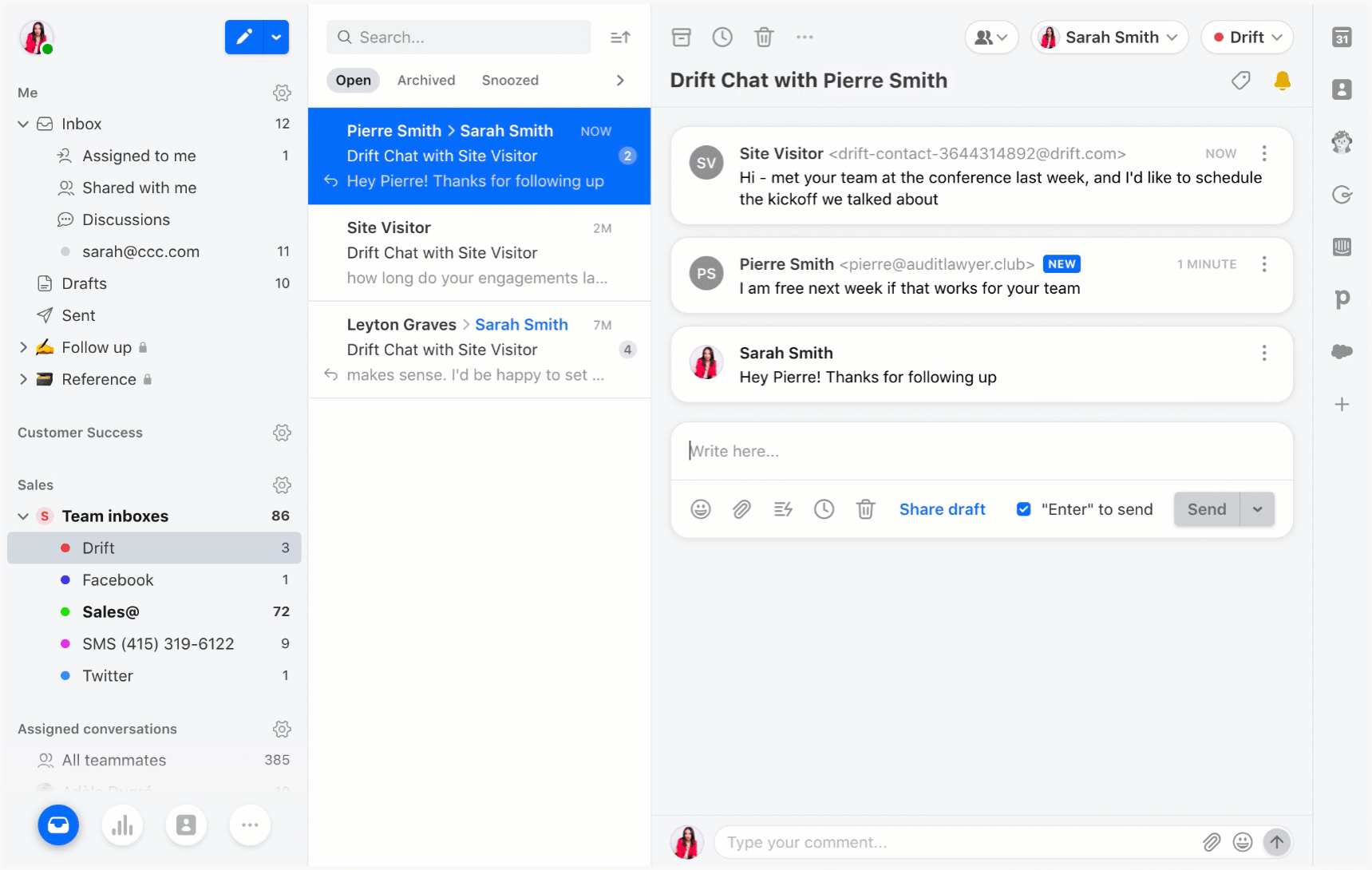E-commerce. It’s what happens when you buy or sell anything over an electronic medium. It’s estimated we spent over $3.5 trillion last year online, and this year, it will likely be more than $4 trillion.
It wasn’t always this way. The first retail sale in the history of the internet happened in August of 1994 when Phil Brandenberger bought a CD on NetMarket.com for $12.48 (plus shipping). It was 10 Summoner’s Tales by Sting, if you want to know! Less than a month later, Pizza Hut would sell the first pizza — large, with mushrooms and extra cheese.
The history of e-commerce is fascinating, and you can hear more about it — including a much earlier, much more illicit (though not quite official) purchase of weed between Stanford and MIT over the Arpanet in the early 70s — in this video from Shopify.
But we’re not here for the history of e-commerce, we’re here for the future.
The internet has made buying and selling incredibly convenient, but for e-commerce businesses, there are massive amounts of infrastructure and work involved in making it appear seamless from a customer’s perspective. And with the market so large and competitive with very low barriers to entry, failing to meet those challenges is an existential failure for most e-commerce companies. The customer has never had more leverage, and that means building solid relationships is the most important thing you can do for your success in this marketplace.
Those relationships — like any human relationships — are built on communication. That’s the purpose of this guide. We’ve identified five main challenges e-commerce companies face and need to overcome in order to communicate well with customers.
Communication channel threats in e-commerce
Responding quickly to inbound customer communications
Managing multiple different channels of customer communications
Creating customer loyalty in a fiercely competitive marketplace
Handling the complexity of returns, exchanges, refunds, shipping, and other operations
Coordinating all your internal teams to deliver a seamless customer experience
In this guide, we’ll break down each challenge and offer strategies to solve them all.
How to respond faster and better
Everyone knows the number one rule of retail: The customer is always right. But that isn’t true. Customers can be wrong about all sorts of things — what they want to buy, how much they think something is worth, the way they treat people in customer service. What we should say is that the customer always matters. Their experience matters, and every interaction with your company creates those experiences.
So when they reach out to you — whether to buy or to ask a question or to make a complaint — the way you respond will create an indelible experience, good or bad. But even that’s too great a simplification.
E-commerce is incredibly complex, and you’re not just communicating with customers, you’re communicating with vendors, partners, shippers, and other third parties. You need to cultivate good relationships with them, too. And you’ll often need to facilitate information sharing between your partners and your customers, without either of them actually communicating.
Let’s say you’re selling vegan chicken nuggets, and you’re under high demand. People can’t get enough of your product. That’s great, but it’s put your supply chain under stress. You can’t produce, pack, and ship fast enough. You’ve let your customers know there will be delays, but they’re flooding you with emails asking, “Where are my nuggets?”
It could be that they haven’t been made yet. It could be they never completed their transaction. It could be a delay on the part of the shipping company. It could be they were swiped off the front porch! But it’s your job to find the nuggets — fast.
Let’s break down the process from your company’s perspective:
You get a message at [email protected].
You route it to customer service.
They look up the record of sale; the order happened.
So they ping fulfillment or look up the record. It was shipped!
Now onto the shipping company. Their system says it’s in transit somewhere outside Bakersfield.
Six steps and multiple emails later, you can reply to the customer.
Then you can repeat it all when only half the nuggets were delivered!
This is just a hypothetical example, and your own process might work a lot differently. But you could easily have this many steps or more before you can respond with an answer — satisfactory or not — to your customer. And that takes time.
That’s why most successful e-commerce companies have tools and processes to capture, triage, answer, and respond to inbound customer communications. It helps you get the message to the right person right away so you can solve their issue quicker.
How to improve response time to the customer
Capture: It’s not always easy for customers to get in touch with you, and despite the effort it creates, you want it to be easy for them. That’s why most companies have multiple communication channels. We’ll talk more about the downsides later, but being available to your customers through email, social media, telephone, SMS, and other media like web chat is a best practice. Making it easy to get the right email address or Twitter handle for different types of questions will be a big help.
Pro tip: Provide several channels (like live website chat, Twitter, and SMS) for customers to contact you, and service each of them with the same level of effort.
Triage: There are all kinds of things that customers will ask you about, and few people at your company will have the breadth and depth of knowledge to answer them all satisfactorily. Also, some questions will be more urgent than others. A huge order from a big customer that’s wrong or lost is much more urgent than a casual question about sizing or stock from a curious shopper. Sorting messages by who needs to see them and how urgent they are is a critical step you can’t skip.
Pro tip: Create a system to automatically sort and triage incoming messages by urgency, ownership, and type of response required.
Answer: Like in the nugget example, one of the major roadblocks will be actually finding the information you need to reply to the customer. Answers tend to live in silos, and if it depends on a third party, it’s an even bigger operational problem. Collecting the right information quickly requires that information to all be visible in one place — and it’s even better if it’s contextual to the question. For instance, can you view the information needed to answer a question in the same place as the question itself?
Pro tip: Create a centralized repository of all information you need to respond to any inquiry — and make sure it’s visible in the same place as the inquiry.
Respond: Finally, the actual message. We’ll talk more about other channels, but one thing’s for sure: you need to be answering each response in the same channel you received the initial outreach. So, if someone texts you, you should text back with a reply. It’s less common than you might think for e-commerce companies to be able to do this. And if they can, it’s often through a process involving multiple steps that use multiple technologies. This limits your response speed. Response time is a huge factor in whether customers say they have a positive experience or negative experience.
Pro tip: Respond back in the same channel you get each message — and do it fast! The top companies all use analytics to track and improve response time.
Learn how Firebox delivers personalized care while responding twice as fast.
How to manage multiple customer communication channels
In the previous chapter, we talked about the importance of having multiple channels for customer communications. For a lot of companies, this is pretty unintuitive. After all, each new channel brings a new, unique workflow. It creates extra operational overhead. It can lead to crossed signals, missed connections, and dropped balls. Funneling everyone to one channel is much easier from the company’s perspective, just use email — or better yet — support tickets!
From a commercial operations perspective, ticketing systems are great. Just take a number, wait in line, we’ll get to everyone in turn. There’s a clear order of operations, expectations are set (usually pretty low — raise your hand if you’ve ever been pumped to get an automated “Your ticket number is #8437402. We’ll respond in the order it was received!” message), and you can pull and resolve tickets as a team.
Unfortunately, as awesome as that model is for customer service and support teams, it can be super frustrating for customers. There are a lot of reasons why adding multiple channels creates a much better customer experience, but let’s look at four main ones:
You’re easier to find: What was the last thing you bought online? If you had an issue with your order, do you know off the top of your head where you’d go to resolve it? That’s the level of accessibility and clarity customers demand — and top companies provide. When you have more channels, it’s just more intuitive for customers to find you.
It’s more natural for the customer: I don’t know about you, but I don’t ever want to see another email from “no-reply@…” If I get an email from a company, I should be able to just respond to the email in context! Humans just work better with context. And part of that is being able to communicate in the channel you’re already in or are most comfortable with. Let’s say you run a promotion or sale on Instagram. You should be ready and eager to engage with customer inquiries using Instagram! And like we talked about in the last chapter, different channels shouldn’t hurt the quality or speed of the response.
The medium is the message: Different channels come with different implicit expectations. If you text someone, you probably expect a shorter, faster response than you might if you emailed the person. If you tweet at someone, you might not expect anything more than a “like” depending on the message. Like that famous Marshall McLuhan quote, “The medium is the message.” Each unique medium gives you implicit information and an opportunity to respond back using the same medium.
It humanizes your brand: Maybe some day when robots run everything they’ll opt for a ticketing system. But nobody wants to be a number. Responding to customers with an actual, personal touch delivers an infinitely better customer experience. Customers have better outcomes, better interactions, and give better feedback. The people you know are available in different channels, the people you buy from should be too.
Using omnichannel for customer communication
What we have here is a failure to… align two conflicting goals (did you think we were going to say “communicate”? 😂 ). On the one hand, we know customers are demanding multiple channels to communicate with companies, and they want the same high standards across each one. On the other hand, it’s harder to maintain that level of service with more channels to upkeep and more personalization to provide.
So is that it? Is it just a sliding scale that you try and throw a dart at the optimal level of balance between service and scale?
That’s where technology can really help you out. These days, you don’t have make that trade-off. Enter: omnichannel communication technology. Essentially, this is a tool that funnels any and every method of communication into one place where you can capture, triage, answer, and respond to all of them back through the same channel you received it in.
From the customer’s perspective, they sent a text, or a DM, or an email, or they made a phone call. From the company’s perspective, it all came into the same dashboard. They handled it with the same level of efficiency they might have had in their old ticketing system. And the customer got the resolution back in the medium they originally used — seamlessly.
Companies that have a best-in-class customer experience as well as any level of scale are using omnichannel customer communication technology.

Learn how Bellhops moves three times faster using Front for omnichannel communication.
How to create customer loyalty
That $4 trillion e-commerce economy is beyond lucrative. And everyone is trying to get a piece of the action. Digitally native companies abound and brick and mortar businesses have rushed to spin up an online component. The market is massive, and the competition is fierce. In the SaaS industry, customer demands and vendor goals aligned to deliver a much lower recurring cost over the span of a much longer lifetime. It’s a win-win.
Some e-commerce companies are able to provide a subscription experience, but most are still transactional — and will be for the long term. But either way, what separates “flash-in-the-pan” companies from truly sustainable businesses will be customer loyalty. If every person who buys once never does again, you’re slowly reducing your total addressable market with every sale. Growth comes from new customers, but increasingly it’s being powered by repeat buyers.
But consumers are smart, and they don’t owe you any kind of loyalty. Just because they bought from you once or twice doesn’t mean they won’t buy from your competitor next time. There are only two things which can keep them coming back time and time again:
A great customer experience
A product that meets or exceeds expectations
And having one without the other is not good enough — not anymore. Even if customers have a great experience, if the product is substandard, they’ll be happy — but they’ll happily take their business to a company that delivers on their expectations (and probably ask for their money back on the way out the door). Likewise, when customers get what they pay for but have a bad experience, they often feel trapped. They’ll detract from your brand on social media and review sites. They won’t buy from you again.
So what can you actually do to foster the kind of loyalty that will fuel your growth over the long term?
Four tactics to improve customer loyalty in e-commerce
Set — and meet — expectations: Very few businesses succeed without having a great product. But even with a competitive offering, you can undermine yourself by setting the wrong expectations. If your communications promise something your product can’t deliver, it doesn’t matter that your product is awesome; your customers will be disappointed. The same is true with your communication strategy. Does your brand promise human customer service? You’ve got to deliver! Do you promise exchanges or returns in a certain time frame? You have to keep that promise! Contrary to what you might think, it’s not even all that necessary to beat those expectations. Customers like to know what they’re going to get, and they’ll be satisfied with you keeping your promise. So don’t “aim low” when it comes to setting expectations. Aim “accurate.” If you say you’re going to respond within a certain amount of time, it’s crucial you have data that backs up your promise.
Close the loop: Almost every company asks customers for feedback, but did you know relatively few of them actually do anything with that feedback? In a famous survey back in 2006, Gartner found that:
95 percent of companies collect feedback.
45 percent alert staff to the findings.
35 percent make decisions using this insight.
10 percent deploy and improve.
5 percent inform customers of the change.
Overachieve at moments of truth: If you think of each relationship with each customer like a story, there’s usually a climax — or maybe even multiple climaxes — along the way. These are moments of heightened emotions. McKinsey refers to them as “moments of truth.” When they happen is usually out of your control, but what you do when they happen is in your hands. And it will define the rest of the relationship for good or for bad. This could be a product failure, a return, a bad interaction, a significant decision — any time emotions are high. This is when it really pays to have a human-powered system for customer communications, but that alone isn’t enough. You need to cultivate emotional intelligence in your team to recognize and respond with extra attention during these moments. Because even if the moment of truth was brought on by a mistake on your side of the relationship, a great response can actually strengthen customer loyalty. But nothing will fracture it like a poor or slow response.
Reward customer loyalty: This should be pretty straightforward. If you want to create loyalty, reward it! When customers buy again, put a system in place to reaffirm and encourage that behavior. For a lot of companies, this looks like discounts, freebies, cash back, gifts — it can be a lot of things! You should be doing it, but you know that. It’s operationalizing it that’s tough. What’s complicated is the level of consistency you need across each point of communication. When customers reach out about the program, you need context on their unique situation at your fingertips. Make sure your loyalty data is quickly available right inside your communication dashboard.
Learn how Anywhere builds trust with customers to keep them coming back for more.
How to seamlessly handle returns, exchanges, and refunds
This is the nitty-gritty of e-commerce. When you buy something but it’s not what you expect, you need a reliable way to undo the transaction. This could be a cancellation, a return, an exchange, or a refund. It’s one of the most complex interactions you’ll have from a logistical perspective. If you thought selling, collecting payment, shipping, and verifying were complicated, imagine engineering the entire process in reverse. It takes a village! Nailing this process can be a key differentiator for you brand, though you might be surprised to know how complicated it can get depending on the logistics involved in each case.
That’s why many companies that have a certain level of scale have entire teams devoted to these kinds of operations.
Let’s break this down from your company’s perspective from the moment you get an inbound message asking for a return, cancellation, exchange, or refund:
You get the message.
You route the message to the proper team.
The team decides whether the request meets predetermined criteria, or…
Asks for more information.
The team initializes a process to resolve the financial aspect (this could involve another team or person).
The team initializes a process to resolve return shipping or the exchange (this could involve multiple other teams).
The team coordinates this process with the customer, who may need to ship the product back.
Your team finalizes the inventory part of process upon receipt.
Your team finalizes the financial part of the process.
You close the loop with the customer.
We could be talking about multiple internal communications for every external message. You have to message your warehouse, message your accounting team, message your shipping vendor, and then message them all again. Each message will need to include all the context each person needs to get their job done. Like we said, it takes a village.
Thankfully, there’s technology to the rescue once again. Having a shared inbox for returns, exchanges, cancellations, and refunds lets everyone involved in the process handle their part of the workflow and hand it off seamlessly with 100% context at every stage. If you have a good customer communication platform, you can automate every step. And if you have a great customer communication platform, you can do it all without your customer feeling like they’re in the hands of a robotic, one-size-fits-all process.
Learn how WizardPins performs customer service magic with Shopify and Front.
How to deliver a unified customer experience
Here’s a real-life story you might relate to.
Let’s say you live in Phoenix, Arizona. It’s August. “It’s a dry heat” is the understatement of the century. “It’s the planet Arrakis from the Dune books” would be more accurate. But that’s why you have sweet, sweet air conditioning! Or at least that’s why you had A/C. Like any machine, it breaks. But that’s why you have a sweet, sweet home warranty! You call your company, they schedule an appointment to assess the damage. You get a confirmation email. But they outsource the appointment to a contractor. But it’s August in Phoenix, and A/C units are breaking left and right. The contractor is overbooked and doesn’t show up. You call the warranty company, somebody else picks up who’s unfamiliar with your situation. They put you on hold to find the contractor. You spend Night One without A/C. The next day, the contractor shows up, but needs a part. That part comes from a third party who ships through a fourth party and that part won’t be here for two days. Thankfully, they’ve brought a portable A/C unit that can cool one room (as long as the room isn’t too big). The room’s too big. You spend Night Two without A/C. A third different person at your warranty company offers to comp hotel rooms when the A/C breaks, but only if you don’t have the portable A/C unit. You didn’t know about this, and the sub-contractor didn’t tell you. The part is delayed in a warehouse in West Phoenix — tantalizingly close. You call to ask if you can drive out there, get the part, and install it yourself at this point. You spend Nights Three and Four without A/C. The next day, a different contractor calls out sick. Nobody else can come. Night Five. Finally, your A/C gets fixed. You don’t like dragging companies online, but you make an exception. A different person at the warranty company immediately emails you to set up a call about your negative review. They try to explain that it’s busy, and their partners messed up and somebody in customer service didn’t know about the hotel thing. And you know these things are complex, but you tell them, “Don’t you get it? You’re all part of the same company!"
Complexity is part of business. But from the customer’s perspective, they expect their experience to be seamless. It’s your job to eliminate the seams internally where you can, and hide them externally where you have to. That means different departments need to communicate with one voice. It means you’re responsible for how your partners and third-party vendors interact with customers. It means each person who interacts with a customer has all the information on the history of your company’s relationship with them at their fingertips.
That’s what Front was built to do.
Let’s say you’re the warranty company. (Please, warranty company, be reading this right now. 😉) If you had Front, the incoming call could route into Front’s interface through Aircall (or another integration). You could contextually discuss the issue with internal stakeholders by commenting on the conversation thread. You could loop in external partners to that discussion through Slack or email. You could assign a case worker to “own” the issue from end-to-end. Anybody on the team could send automated, customizable message templates on behalf of that owner. Front customers save an average of six hours per user, per week! At a glance you could pull up account information in Shopify or your CRM. You could collaborate on an email draft together to smooth over any bumps. And you could track the whole process, from touch points to response time to total time spent using built-in analytics.
Front gives your e-commerce company an “unfair” advantage in four concrete ways:
Front puts all your customer communications across any and every channel in one place.
Front keeps all necessary context — from CRM data to conversation history to Shopify records and much more — where everyone on your team can see them and collaborate on them.
Front lets you scale personal, human touch to your entire customer base without sacrificing impact.
Front helps you learn and improve with powerful analytics, like response time, number of messages sent, and a lot more.
Front is the customer communication platform Shopify trusts to enable its Merchant Success team. If you’re a Shopify customer, they’ve probably used it to communicate with you!
For e-commerce companies, Front is your path to a truly seamless customer experience, and you can try it completely free today.
Learn how Open Listings scaled to serve 500,000 home buyers with Front.
Written by Matthew Klassen
Originally Published: 22 May 2020











